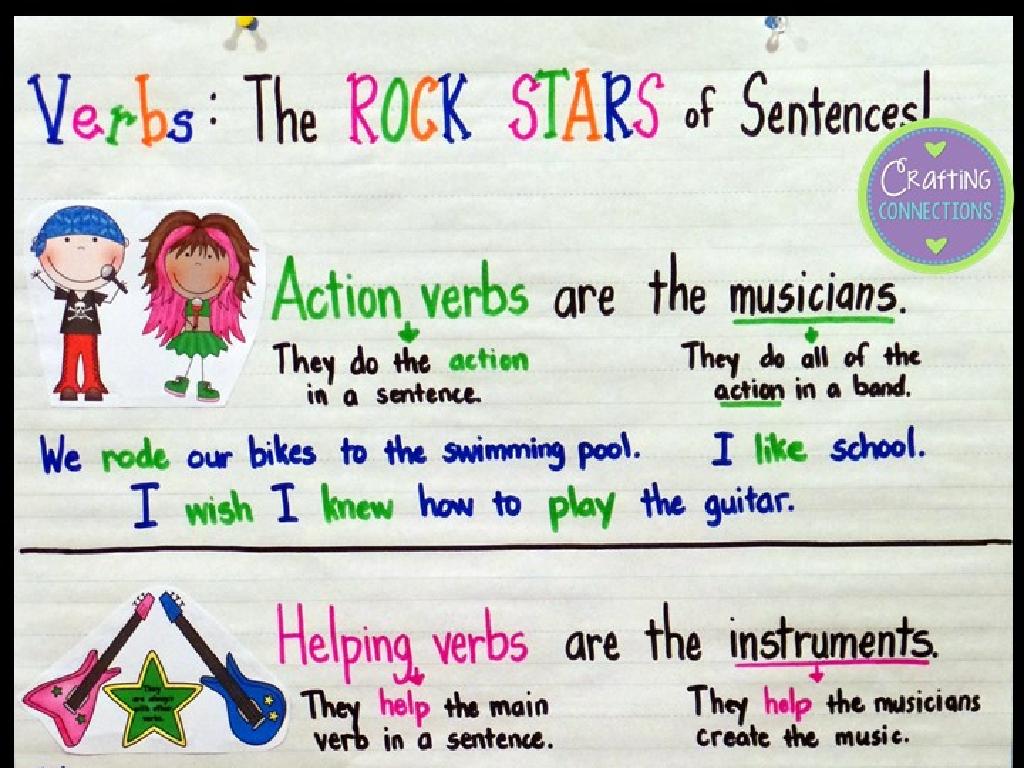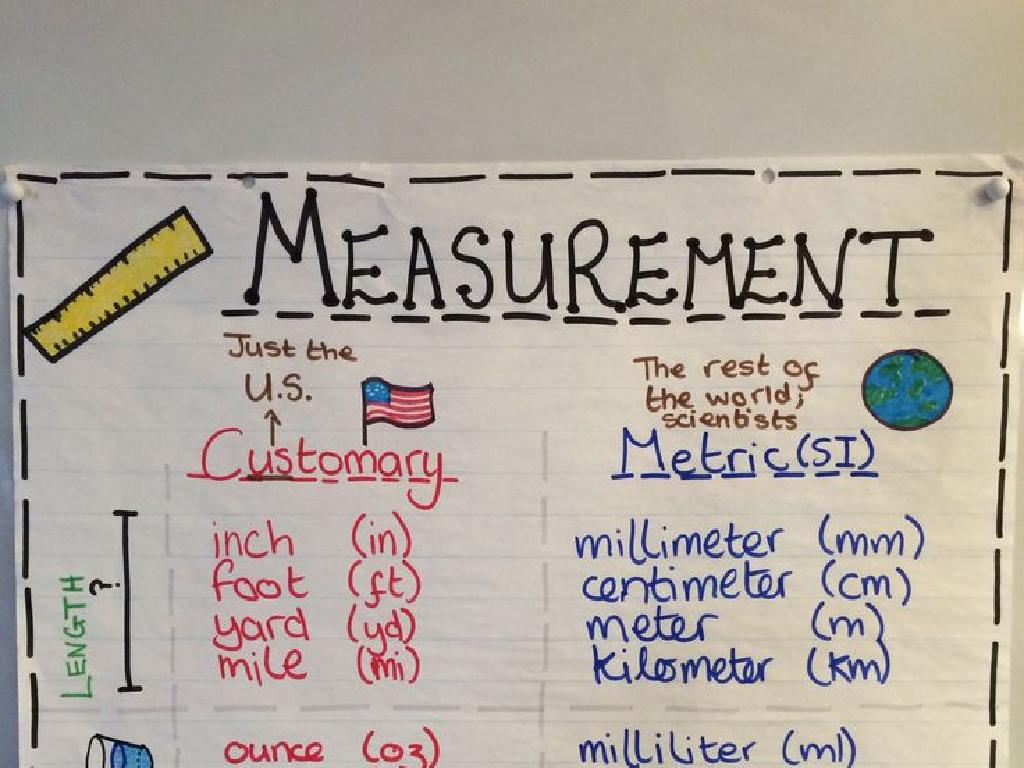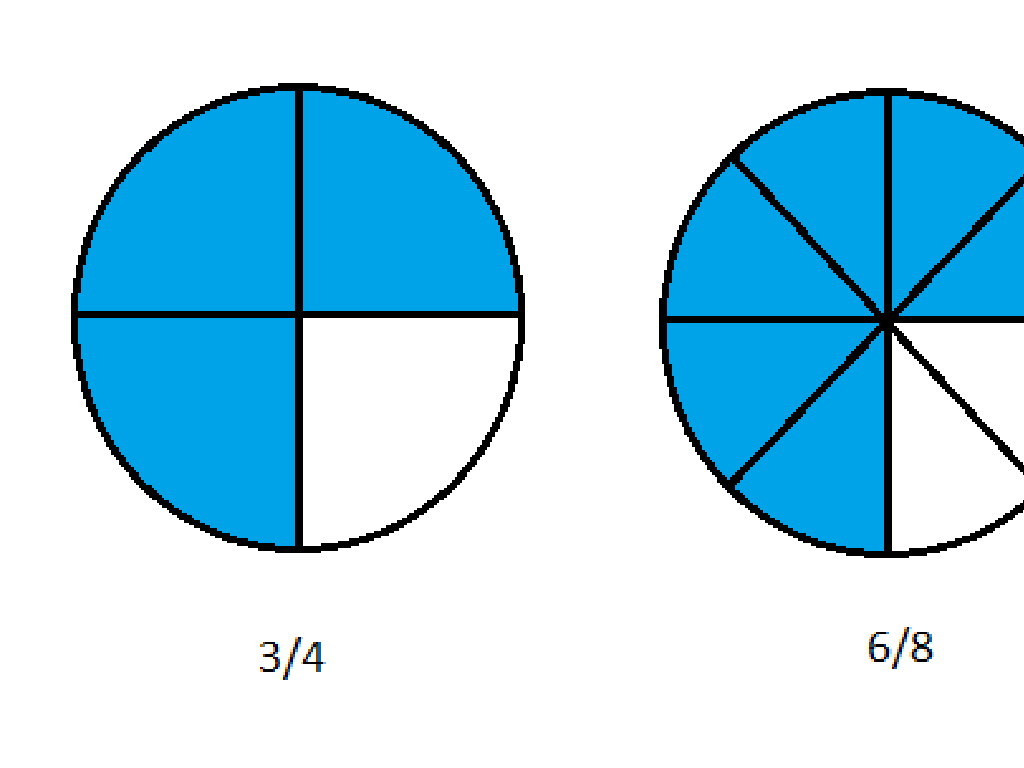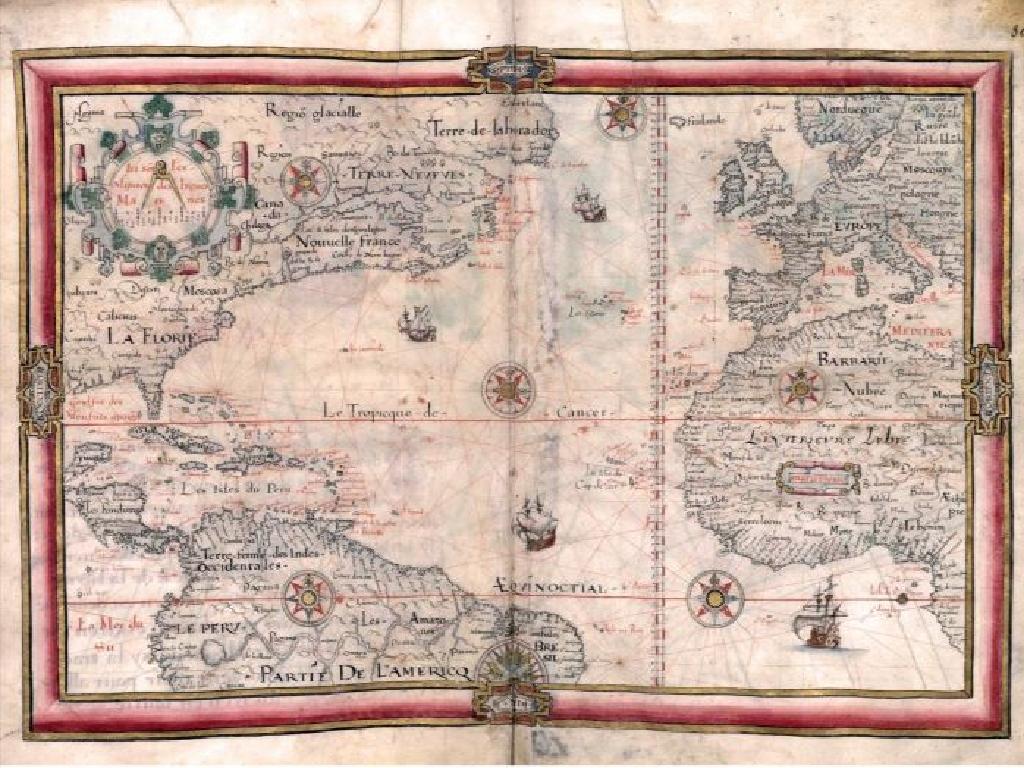Multiply Fractions By Whole Numbers Using Models: Complete The Equation
Subject: Math
Grade: Fifth grade
Topic: Understand Fraction Multiplication
Please LOG IN to download the presentation. Access is available to registered users only.
View More Content
Multiplying Fractions by Whole Numbers
– Visualize fraction multiplication
– Use models like pie charts to see parts of a whole
– Combine fractions with whole numbers
– Multiply each part of the fraction by the whole number
– Equation completion technique
– Learn to fill in missing numbers in an equation
– Practice with examples
– Try multiplying 1/4 by 3 to complete the equation 1/4 x 3 = ?
|
This slide introduces the concept of multiplying fractions by whole numbers. Start by explaining that multiplication is not just for whole numbers, but can also be used to combine fractions and whole numbers. Use visual aids like pie charts or fraction bars to help students visualize the process. Show how each part of the fraction is multiplied by the whole number to find the product. Teach students the technique for completing equations involving fraction multiplication. Provide several examples for the students to practice, such as multiplying 1/4 by 3, and guide them through the process of completing the equation. Encourage students to visualize the multiplication as adding the fraction to itself multiple times, which is the same as multiplying. This will help solidify their understanding of the concept.
Multiplying Fractions by Whole Numbers
– Review: What is a fraction?
– A fraction represents a part of a whole or a set
– Fraction components: Numerator/Denominator
– Numerator: how many parts we have. Denominator: how many parts in total
– Fractions as parts of a whole
– If a pizza is cut into 4 pieces, 1 piece is 1/4 of the pizza
– Everyday examples of fractions
– Using 2/3 cup of sugar in a recipe, or scoring 3/5 goals in a game
|
Begin with a quick review of fractions, ensuring students recall that a fraction represents a part of a whole, with the numerator indicating the number of parts taken and the denominator showing the total number of equal parts. Use tangible examples like slices of pizza to illustrate fractions in a way that is relatable. Then, connect these concepts to real-life scenarios, such as measuring ingredients for a recipe or keeping score in sports, to demonstrate the practical application of fractions. This foundation is crucial for understanding the subsequent lessons on multiplying fractions by whole numbers.
Multiplying Fractions by Whole Numbers
– Multiplication as repeated addition
– Multiplication with whole numbers
– Visualize with repeated addition
– Picture adding 1/4 three separate times
– Example: 3 x 1/4
– 3 x 1/4 is like adding 1/4 + 1/4 + 1/4
|
This slide introduces the concept of multiplying fractions by whole numbers using the model of repeated addition, which is a familiar concept from whole number multiplication. Start by explaining that multiplication is a shortcut for adding the same number several times. Use visual aids like fraction bars or circles to show how 1/4 added three times equals 3/4, reinforcing the concept with a concrete example. Encourage students to visualize the process and to use this method to solve similar problems. This will help them understand the concept of fraction multiplication as an extension of whole number multiplication.
Multiplying Whole Numbers by Fractions
– Multiplication with fractions
– It’s like adding the fraction to itself multiple times
– Visual models for understanding
– Draw a fraction model and shade parts to represent multiplication
– Example: 3 x (1/2)
– Visualize 3 groups of 1/2 to understand 3 x (1/2)
– Completing the equation
– Use models to find the product of whole numbers and fractions
|
This slide introduces the concept of multiplying whole numbers by fractions. Begin by explaining that multiplication involving fractions can be thought of as repeated addition. For instance, 3 x (1/2) means adding 1/2 three times. Use visual fraction models to help students grasp this concept by drawing a circle or bar divided into halves, and then shading in three of those halves to represent 3 x (1/2). This visual approach makes it easier for students to understand the process and helps them complete the equation to find the product. Encourage students to draw their own models and practice with different whole numbers and fractions to solidify their understanding.
Let’s Practice Together: Multiplying Fractions by Whole Numbers
– Guided example walkthrough
– Using visual models for multiplication
– Draw a model to represent (3/4) and duplicate it twice
– Example problem: 2 x (3/4)
– 2 groups of (3/4) make 6/4 or 1 2/4
– Solving step by step
– Combine the groups to find the product
|
This slide is designed for a collaborative class activity where students will learn to multiply fractions by whole numbers using visual models. Start by walking through a guided example, explaining each step clearly. Use visual aids like fraction circles or bars to illustrate the concept of multiplying a fraction by a whole number. For the example 2 x (3/4), show two groups of three-fourths and demonstrate how to combine them to find the total. Encourage students to draw their own models and to think of the multiplication as repeated addition. After solving the example, ask students to complete similar problems and share their solutions. This hands-on activity will help solidify their understanding of fraction multiplication.
Your Turn to Multiply: Practice Time!
– Begin independent practice problems
– Use visual models for help
– Draw pies or bars to represent fractions
– Match models with equations
– Ensure the pieces in your model equal the product
– Check your work carefully
|
This slide is designed to guide students into the independent practice portion of the lesson, where they will apply what they’ve learned about multiplying fractions by whole numbers. Encourage students to draw visual models such as fraction bars or pie charts to represent the fractions they are multiplying. This will help them to visually see the multiplication process. Remind them to check their work by comparing the completed model to the equation to ensure accuracy. Provide several example problems of varying difficulty and encourage students to attempt the problems before seeking help. For the teacher: Be ready to assist students who are struggling and offer praise to those who are using models effectively. Have additional problems available for students who finish early and need more practice.
Class Activity: Fraction Multiplication Art
– Create a fractional art piece
– Canvas divided into sections
– Use fraction multiplication for coloring
– Multiply fractions by whole numbers to determine how much of a section to color
– Each section represents a product
– For example, 1/2 x 4 means color 2 whole sections
|
This activity combines creativity with math to help students understand the concept of multiplying fractions by whole numbers. Provide each student with a blank canvas that is pre-divided into equal sections. Students will use their knowledge of fraction multiplication to fill in the sections with colors. For instance, if a section represents 1/4 of the canvas and the student multiplies by 2, they will color 2 of the 1/4 sections. This visual representation reinforces the concept that multiplying a fraction by a whole number results in ‘scaling up’ the fraction. Have a variety of colors available and encourage students to create patterns or designs with their colored sections. This will make the learning process enjoyable and memorable. After the activity, facilitate a discussion where students explain their multiplication process and how it influenced their art.
Conclusion: Multiplying Fractions by Whole Numbers
– Recap: Steps to multiply fractions
– Multiply the numerator by the whole number and keep the same denominator.
– Importance of this concept
– Understanding this prepares for advanced math & real-life problems.
– Preview: Multiplying Fractions by Fractions
– Next, we’ll learn how to multiply two fractions together.
– Encourage practice at home
|
As we wrap up today’s lesson, it’s crucial to review the steps for multiplying a fraction by a whole number: multiply the numerator (top number) by the whole number and keep the denominator (bottom number) the same. Emphasize the importance of mastering this concept as it lays the groundwork for more complex mathematical operations and has practical applications in solving real-world problems. Give a sneak peek into the next lesson where students will learn to multiply fractions by fractions, building on the foundation laid today. Encourage students to practice at home with different examples to reinforce their understanding.






